Bathroom Enhancements
Does Bath Use More Water Than Shower

We frequently discuss whether it is more water-efficient to take a bath or a shower. This article seeks to finally resolve the debate.
By comparing the water usage of baths and showers, considering factors that affect water efficiency, and determining the eco-friendliest option, we will provide you with data-driven insights to help you make an informed decision.
Get ready to master the art of saving water without compromising on your hygiene routine.
Key Takeaways
- Baths generally consume more water due to their larger capacity.
- On average, a bath can use anywhere between 35-50 gallons of water.
- A 10-minute shower with a water-efficient showerhead uses around 25 gallons.
- Opting for showers instead of baths can reduce water consumption.
The Water Usage of Baths
When comparing the water usage of baths to showers, it’s important to understand that baths generally consume more water due to their larger capacity. On average, a bath can use anywhere between 35-50 gallons of water, while a 10-minute shower with a water-efficient showerhead uses around 25 gallons.

This significant difference in water usage highlights the need for implementing water-saving tips in our daily routines. By opting for showers instead of baths, we can reduce our water consumption and contribute to conserving this valuable resource. Using less water not only helps the environment but also offers numerous benefits such as lower water bills, reduced energy usage for heating water, and a smaller carbon footprint.
The Water Usage of Showers
To continue our discussion on water usage, let’s now explore the water consumption of showers.
When it comes to saving water, one effective method is using water-saving showerheads. These showerheads are designed to reduce water flow while maintaining a satisfactory shower experience. By limiting the amount of water used per minute, water-saving showerheads can significantly reduce water consumption during showers.
Another factor that influences water usage is the time spent in the shower. The longer you stay in the shower, the more water you’re likely to use. Therefore, being mindful of the time spent in the shower can also contribute to water conservation efforts.
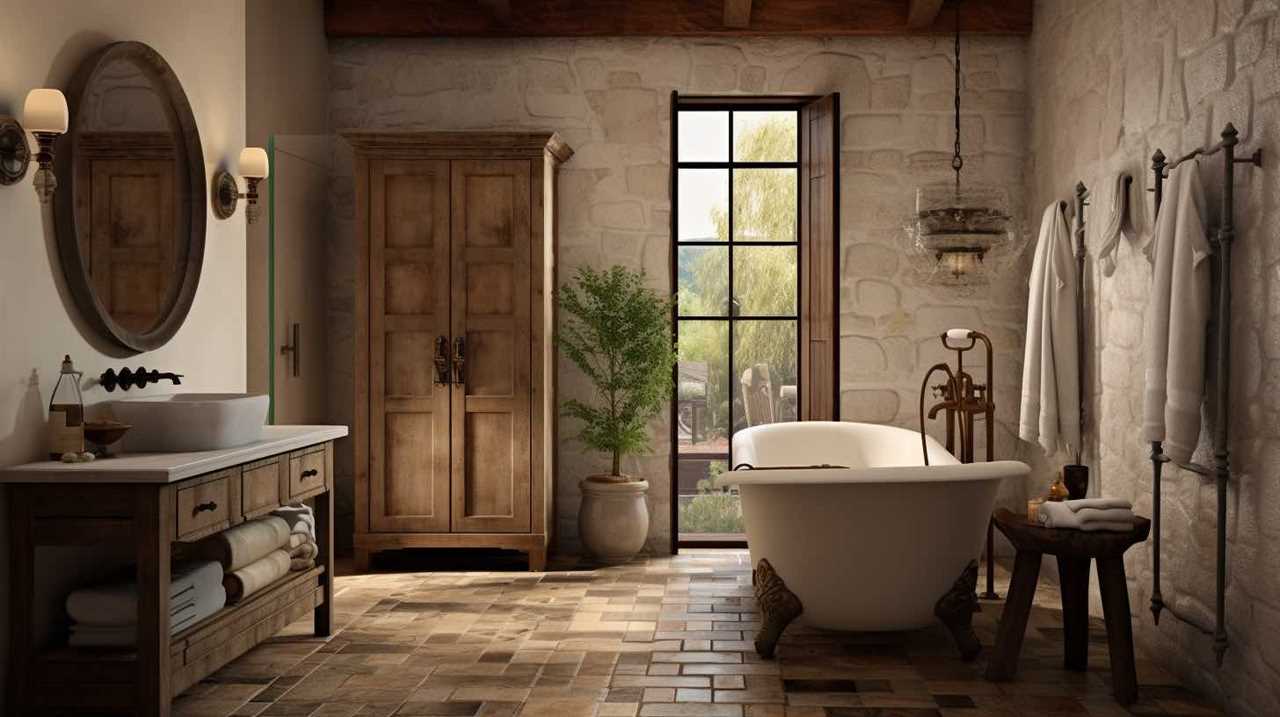
Now that we’ve examined the water usage of showers, let’s move on to discussing the factors that affect water efficiency.
Factors Affecting Water Efficiency
Now let’s delve into the factors that impact our water efficiency as we continue our exploration of the water consumption of showers. Here are three key factors to consider:
- Water saving tips for showers: Implementing water-saving habits can significantly reduce water consumption. Some tips include taking shorter showers, turning off the water while lathering or shampooing, and using a low-flow showerhead.
- The impact of water efficient fixtures on water consumption in bathrooms: Upgrading to water-efficient fixtures, such as low-flow toilets and faucets, can greatly reduce water usage. These fixtures are designed to minimize water wastage while still providing adequate functionality.
- Proper maintenance and regular inspections: Leaks in pipes, faucets, or showerheads can lead to unnecessary water loss. Regularly checking for leaks and promptly fixing them can help maintain water efficiency in the bathroom.
Comparing Bath and Shower Water Consumption
As we continue exploring the water consumption of showers, it’s important to compare the water usage between baths and showers on a regular basis. When it comes to water conservation and minimizing our environmental impact, it’s crucial to make informed decisions about our daily routines.
On average, a bath uses significantly more water than a shower. A standard bathtub holds around 70 gallons of water, while a 10-minute shower typically uses only around 25 gallons. This means that taking a shower instead of a bath can save around 45 gallons of water per use.

Over time, these small choices can add up to significant water savings. By opting for showers over baths, we can contribute to water conservation efforts and reduce our overall environmental impact.
Determining the Eco-Friendliest Option
By comparing the water usage between baths and showers, we can determine the eco-friendliest option for conserving water and minimizing our environmental impact.
Here are three key factors to consider when determining the eco-friendliest option:
- Impact of water consumption on the environment: Water scarcity is a growing global concern, and reducing water consumption is crucial in preserving this vital resource. By opting for the option that uses less water, we can significantly reduce our environmental footprint.
- Benefits of water-saving devices and techniques: Installing water-saving devices, such as low-flow showerheads and faucets, can help minimize water usage without compromising on comfort. Additionally, adopting water-saving techniques like taking shorter showers or using a bathwater recycling system can further contribute to water conservation efforts.
- Long-term sustainability: Choosing the eco-friendliest option not only benefits the environment but also saves money in the long run. By reducing water consumption, we can lower water bills and contribute to a more sustainable future.
Frequently Asked Questions
How Does the Water Usage of Baths and Showers Compare to Other Common Household Activities?
Baths and showers play a significant role in our environmental impact. Understanding their water usage compared to other activities is crucial. Additionally, cultural differences in bathing practices can have varying effects on water consumption worldwide.

What Are Some Tips or Techniques for Reducing Water Consumption While Taking a Bath or Shower?
Here are some tips for water efficient bathing and techniques to conserve water in the bathroom. We can reduce water consumption by taking shorter showers, installing low-flow showerheads, and filling the bathtub only halfway.
Are There Any Specific Types of Showers or Baths That Are More Water-Efficient Than Others?
There are various types of showers that are more water-efficient, such as low-flow showerheads. Additionally, water efficiency in baths can be improved by using a smaller tub or filling it only halfway.
What Are Some Additional Factors to Consider When Comparing the Water Consumption of Baths and Showers?
When comparing the water consumption of baths and showers, there are additional factors to consider. These include the duration of the activity, the type of showerhead, and how often they are used in comparison to other activities.
Is There Any Data Available on the Long-Term Impact of Using Baths Versus Showers on Water Resources and the Environment?
There is data available on the long-term impact of using baths versus showers on water resources and the environment. It compares water usage and highlights the potential consequences for sustainability.

Conclusion
In conclusion, when it comes to water usage, showers are the clear winner. They use significantly less water compared to baths, making them a more eco-friendly option.
Factors such as showerhead efficiency and shower duration can further enhance water efficiency.
So next time you’re debating between a bath or a shower, remember that choosing a shower not only saves water but also contributes to a greener planet.
With an impeccable eye for detail and a passion for bathroom-related, Ava leads our editorial team gracefully and precisely.
Under her guidance, Best Modern Toilet has flourished as the go-to resource for modern bathroom enthusiasts. In her free time, you might find Ava exploring antique shops and looking for vintage bathroom fixtures to add to her collection.
Bathroom Enhancements
Why Toilet Doesn’t Flush

Were you aware that the most common reason toilets fail to flush properly is due to a clogged toilet drain?
Well, we’re here to help you understand why and how to fix it.
In this article, we’ll explore the various culprits behind a malfunctioning toilet, such as a faulty flapper valve, insufficient water level, malfunctioning flush handle, and even a blocked vent pipe.
So, if you desire mastery over your toilet troubles, keep reading for some practical solutions.

Key Takeaways
- Clogged toilet drain is the most common reason why toilets don’t flush properly.
- Regularly checking and replacing the flapper valve is important for proper water flow.
- Insufficient water level can be caused by low water pressure in the plumbing system.
- A broken lever or loose chain can hinder the flush handle’s effectiveness.
Clogged Toilet Drain
One common cause of a toilet not flushing properly is due to a clog in the toilet drain. A clogged toilet drain can occur due to various reasons, such as the accumulation of toilet paper, foreign objects, or even mineral deposits.
Regular toilet maintenance is crucial to prevent such clogs from happening. By ensuring proper flushing and not overloading the toilet with excessive paper or foreign objects, you can minimize the risk of a clog in the drain.
However, if you do encounter a clogged toilet drain, it’s recommended to seek professional plumbing services. Trained plumbers have the expertise and tools to effectively unclog the drain and restore proper functionality to your toilet.
Now, let’s move on to the next section, where we’ll discuss the faulty flapper valve and its impact on toilet flushing.

Faulty Flapper Valve
The faulty flapper valve can be a common culprit for a toilet not flushing properly. The flapper valve is located in the toilet tank and controls the flow of water from the tank into the bowl during a flush. When the flapper valve is faulty, it may not fully open or close, affecting the flushing mechanism.
One common issue is a flapper valve that doesn’t seal properly, allowing water to continuously leak into the bowl. This can result in reduced water pressure and a weak or incomplete flush.
Additionally, a flapper valve that doesn’t fully open can restrict the flow of water and lead to a weak flush. Therefore, it’s important to regularly check and replace the flapper valve to ensure proper water flow and a fully functional flush.
Insufficient Water Level
To address the issue of insufficient water level, we need to ensure that an adequate amount of water is present in the toilet tank for a proper flush. One possible cause of this problem is low water pressure. If the water pressure in your plumbing system isn’t sufficient, it can affect the amount of water that enters the toilet tank during each flush.

Another potential cause is a faulty fill valve. The fill valve is responsible for refilling the toilet tank after each flush, and if it isn’t functioning properly, it may not allow enough water to enter the tank. To fix this issue, you can check the water pressure in your plumbing system and make sure it’s within the recommended range. Additionally, you can inspect and replace the fill valve if necessary.
Now let’s move on to the next subtopic, which is the malfunctioning flush handle.
Malfunctioning Flush Handle
Now let’s address the issue of a malfunctioning flush handle, which can hinder the proper functioning of the toilet. A broken lever or a loose chain can prevent the flush handle from effectively activating the flush mechanism. When the lever is broken, it may not be able to create the necessary pressure to initiate the flushing process. Similarly, a loose chain can disrupt the connection between the flush handle and the flapper, causing the toilet to not flush properly or not flush at all.
To fix this issue, you can replace the broken lever or adjust the chain to ensure it’s properly connected. By resolving this problem, you can restore the functionality of the toilet.
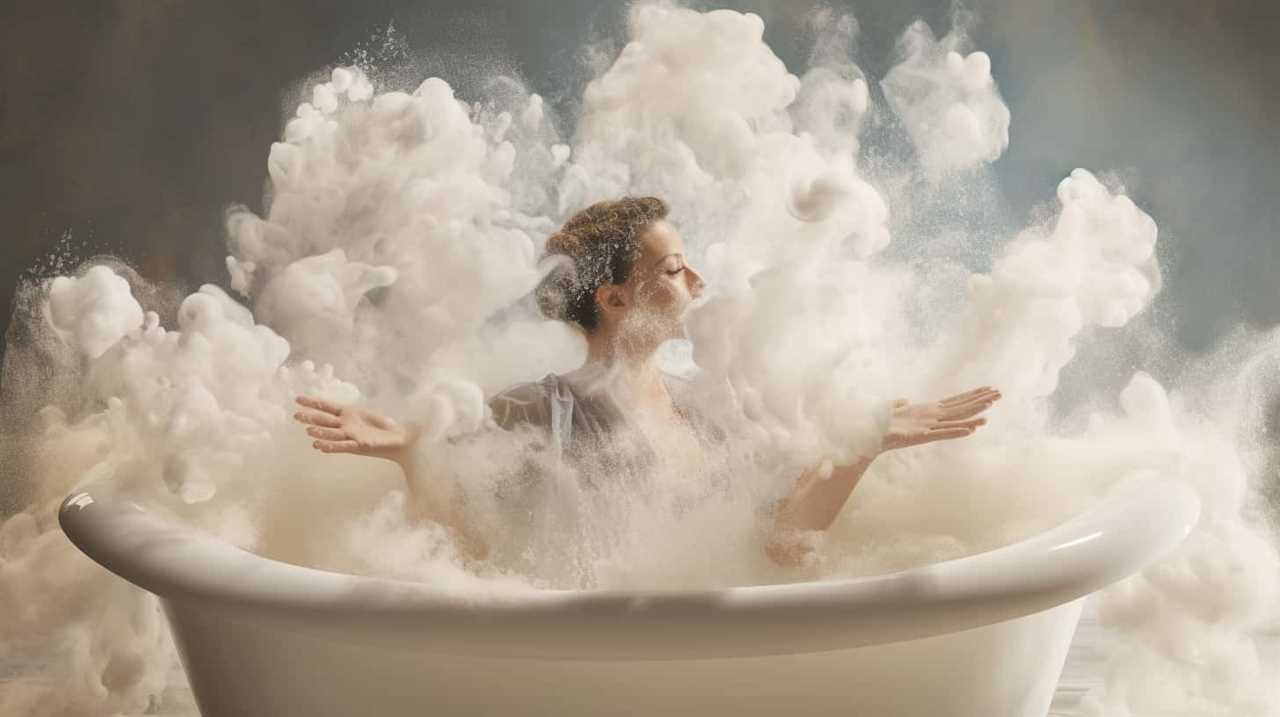
Now, let’s move on to the next section where we’ll discuss the potential issue of a blocked vent pipe.
Blocked Vent Pipe
Continuing from our previous discussion on the malfunctioning flush handle, another potential issue that can prevent a toilet from flushing properly is a blocked vent pipe.
Vent pipe maintenance is crucial in ensuring the smooth operation of your toilet. A vent pipe is a vertical pipe that helps remove sewer gases and allows air to enter the plumbing system. It’s connected to the drainpipe and extends through the roof.
Common causes of vent pipe blockages include debris buildup, animal nests, or ice during winter. These blockages can restrict the airflow, causing negative pressure that prevents the toilet from flushing effectively.

Regular inspection and cleaning of the vent pipe can help prevent blockages and ensure proper functioning of your toilet.
Frequently Asked Questions
How Often Should I Clean My Toilet Drain to Prevent Clogging?
To prevent clogs in the toilet drain, we recommend cleaning it at least once every few months. Neglecting regular maintenance can lead to blockages caused by hair, toilet paper, or foreign objects.
Are There Any Specific Signs or Symptoms That Indicate a Faulty Flapper Valve?
Are there any specific signs of a faulty flapper valve? Troubleshooting a malfunctioning flush handle is crucial. By identifying symptoms like continuous running water or weak flushes, we can pinpoint the issue and fix it efficiently.
Is It Possible for a Toilet to Have an Insufficient Water Level Even When the Tank Is Full?
It is possible for a toilet to have insufficient water level even when the tank is full. This can lead to low toilet water pressure, causing common toilet flushing problems.

Can a Malfunctioning Flush Handle Be Fixed Without Replacing the Entire Toilet?
Yes, a malfunctioning flush handle can often be fixed without replacing the entire toilet. By troubleshooting toilet flushing issues, we can identify the problem and repair or replace the faulty handle.
How Can I Identify if a Blocked Vent Pipe Is Causing My Toilet Not to Flush Properly?
To troubleshoot toilet flushing issues, we need to identify if a blocked vent pipe is the cause. Look for signs such as gurgling sounds, slow draining, or foul odors. Professional help may be required for further inspection and resolution.
Conclusion
In conclusion, there are several common reasons why a toilet may not flush properly. A clogged toilet drain, faulty flapper valve, insufficient water level, malfunctioning flush handle, or a blocked vent pipe can all contribute to this issue.
Fixing these problems is essential to ensure the smooth functioning of your toilet. Just like a well-oiled machine, a properly working toilet keeps things flowing smoothly, just like a river carving its path through a lush valley.
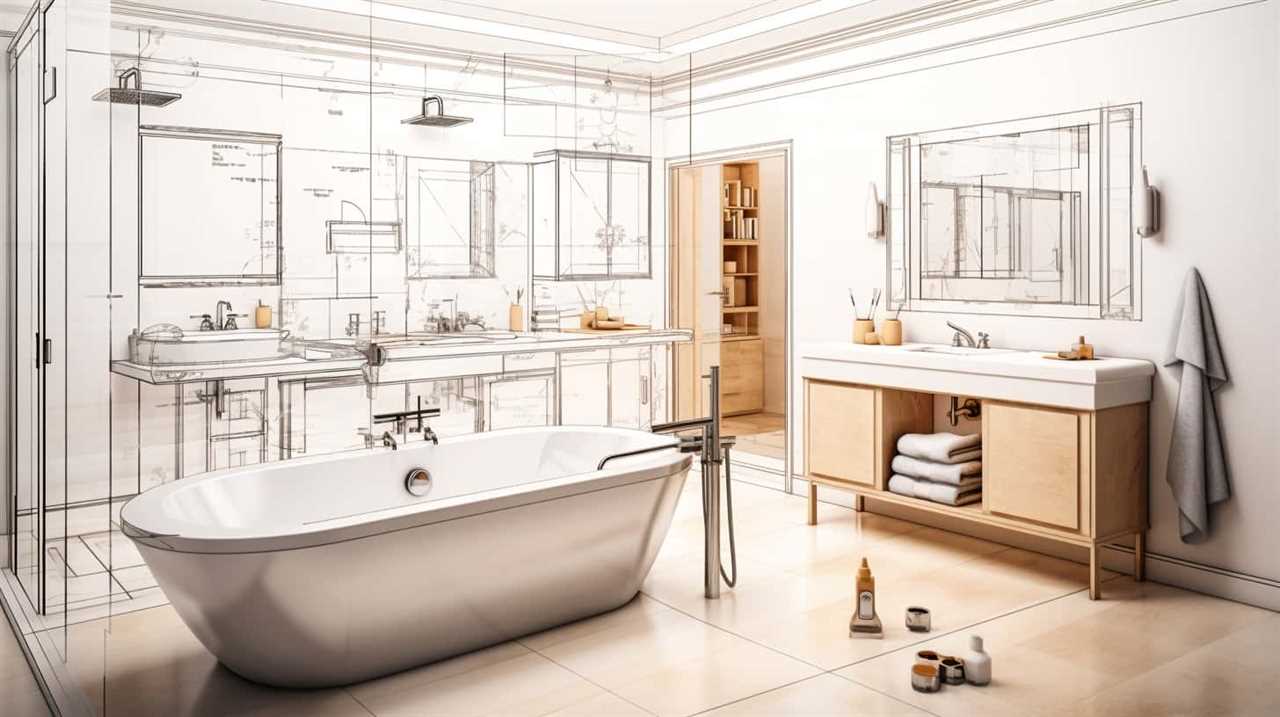
With an impeccable eye for detail and a passion for bathroom-related, Ava leads our editorial team gracefully and precisely.
Under her guidance, Best Modern Toilet has flourished as the go-to resource for modern bathroom enthusiasts. In her free time, you might find Ava exploring antique shops and looking for vintage bathroom fixtures to add to her collection.
Bathroom Enhancements
Why Steam Bath Benefits

Are you exhausted from the daily routine and seeking relaxation? Then consider indulging in a steam bath!
We, as experts in wellness, can attest to the countless benefits of this rejuvenating experience. Imagine stepping into a tranquil oasis, where stress melts away and your body is pampered.
Not only will you find relief from muscle soreness and joint pain, but your circulation will improve, toxins will be flushed out, and your skin will glow with newfound radiance.
Step into the steam and unlock the secrets of true relaxation and rejuvenation.

Key Takeaways
- Mindfulness meditation in steam baths promotes stress reduction and overall well-being.
- Aromatherapy in steam baths with essential oils like lavender or eucalyptus enhances relaxation.
- Steam baths increase blood flow, improving cardiovascular health.
- Steam baths improve breathing patterns by opening up airways.
Stress Relief and Relaxation
When we step into a steam bath, we can immediately feel the stress melt away as our bodies relax and our minds calm down. This is because steam baths provide an environment that promotes stress relief and relaxation.
One of the key factors contributing to this is mindfulness meditation. Engaging in mindfulness meditation while in a steam bath allows us to focus solely on the present moment, letting go of any worries or anxieties. This practice has been shown to reduce stress levels and improve overall well-being.
Additionally, the use of aromatherapy in steam baths further enhances relaxation. The inhalation of essential oils, such as lavender or eucalyptus, can have a calming effect on the mind and body, promoting a sense of tranquility and peace.
Combined, mindfulness meditation and aromatherapy in steam baths offer a powerful tool for stress relief and relaxation.

Improved Circulation and Detoxification
One major benefit of steam baths is their ability to improve circulation and detoxify the body.
Steam baths work by increasing the blood flow throughout the body, which in turn improves cardiovascular health. This increased blood flow helps to deliver oxygen and nutrients to the muscles and organs, promoting their proper functioning. Additionally, the heat from the steam bath causes the blood vessels to dilate, which further enhances circulation.
Furthermore, steam baths aid in detoxification by stimulating the sweat glands and promoting perspiration. Sweating helps to eliminate toxins and impurities from the body, resulting in a cleaner and healthier system. The increased metabolism caused by the steam bath also contributes to detoxification, as it allows the body to efficiently process and eliminate waste products.
Relief From Muscle Soreness and Joint Pain
To find relief from muscle soreness and joint pain, we can turn to the benefits of steam baths. Steam baths have been used for centuries as natural remedies for muscle soreness and joint pain.

The heat from the steam helps to increase blood flow, which in turn promotes healing and reduces inflammation in the muscles and joints. Additionally, the moisture in the steam helps to lubricate the joints, making movement easier and reducing pain.
Regular steam bath sessions can also help to prevent muscle soreness and joint pain by keeping the muscles and joints flexible and reducing the risk of injury. By incorporating steam baths into our routine, we can experience relief from muscle soreness and joint pain, and improve our overall well-being.
Now, let’s move on to the next section and explore the benefits of steam baths for enhanced respiratory health and sinus relief.
Enhanced Respiratory Health and Sinus Relief
Steam baths can greatly improve our respiratory health and provide relief for sinus issues. Here are some key benefits of steam baths for enhanced respiratory health and sinus relief:

- Improved Breathing Patterns:
- Steam inhalation helps to open up the airways, allowing for easier breathing.
- The warm, moist air can help to loosen mucus and phlegm, making it easier to expel.
- Alleviating Congestion:
- Steam baths can provide relief from nasal congestion and sinus pressure.
- The steam helps to moisturize the nasal passages and reduce inflammation, allowing for easier breathing.
By incorporating steam baths into our routine, we can experience improved breathing patterns and find relief from sinus congestion. The warm, moist air in a steam bath can help to open up our airways and alleviate congestion, making it easier to breathe.
Skin Rejuvenation and Improved Complexion
Our skin becomes rejuvenated and our complexion improves when we indulge in steam baths. Steam opens up our pores, allowing impurities and toxins to be released from our skin. This deep cleansing process helps to remove dirt, oil, and dead skin cells, leaving our skin looking fresh and radiant.
Steam also increases blood circulation, bringing oxygen and nutrients to the skin cells, which promotes cell turnover and collagen production. This leads to improved skin elasticity and a reduction in the appearance of fine lines and wrinkles.
Additionally, the increased moisture from the steam helps to hydrate and plump the skin, resulting in a smoother and more youthful complexion.

Frequently Asked Questions
Is It Safe for Pregnant Women to Use Steam Baths?
Using steam baths during pregnancy should be approached with caution due to potential risks. It’s important to consult with a healthcare professional to understand the steam bath precautions and ensure the safety of both the mother and the baby.
Can Steam Baths Help With Weight Loss?
Steam baths can potentially aid in weight loss by increasing metabolism and promoting sweating. However, compared to saunas, steam baths may have a lesser impact due to the lower temperatures. The science behind steam baths and weight loss warrants further investigation.
Are There Any Age Restrictions for Using Steam Baths?
There are generally no age restrictions for using steam baths, as they can provide various benefits for different age groups. However, pregnant women should take precautions and consult with their healthcare provider before using steam baths.
Can Steam Baths Help Improve Sleep Quality?
Yes, steam baths can help improve sleep quality. They have been shown to promote relaxation and reduce stress, which can contribute to better sleep. Additionally, steam baths have benefits for athletes and stress relief.
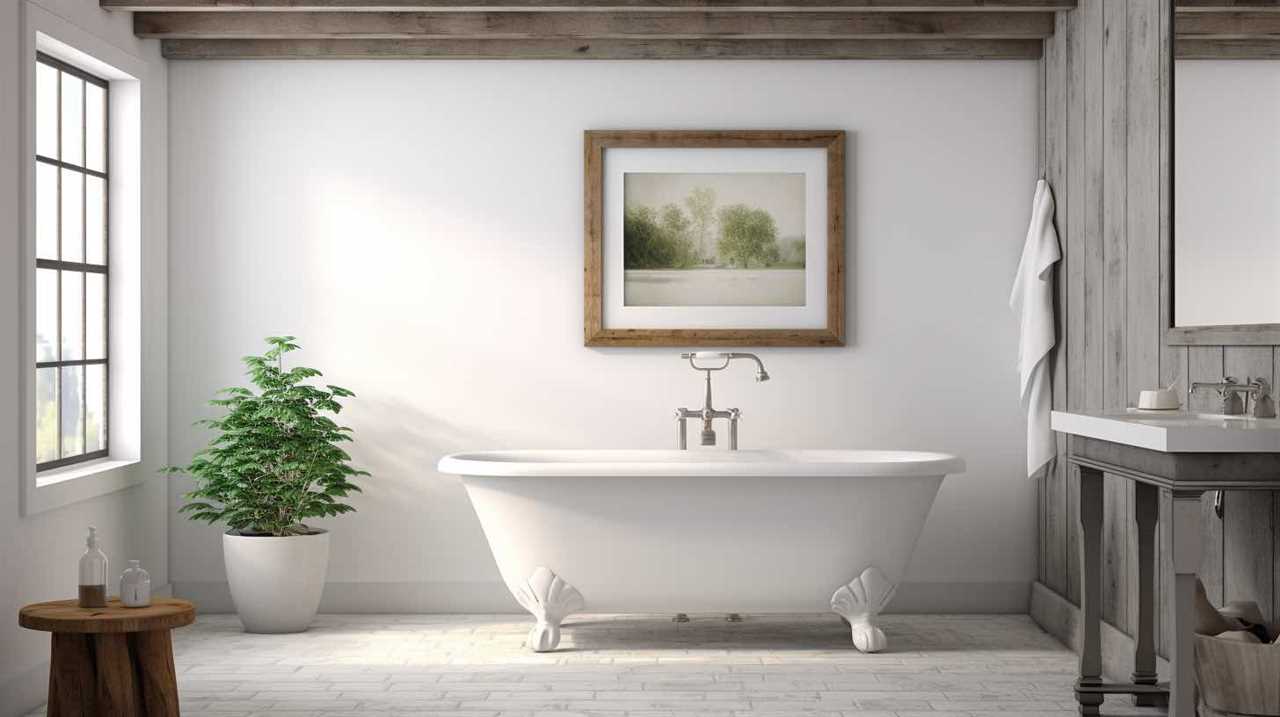
How Long Should a Steam Bath Session Last for Maximum Benefits?
Steam bath duration guidelines vary depending on individual preferences and health conditions. However, for maximum benefits, a typical session should last around 10-15 minutes. Taking a steam bath after exercise can help relax muscles and improve recovery.
Conclusion
In conclusion, steam baths offer a multitude of benefits for both the mind and body. From stress relief and relaxation to improved circulation and detoxification, steam baths provide a holistic approach to wellness.
They can also alleviate muscle soreness, joint pain, and respiratory issues, while promoting skin rejuvenation and a healthier complexion.
With so many advantages, it’s no wonder steam baths have been enjoyed for centuries. So why not indulge in this centuries-old tradition and experience the remarkable benefits for yourself?

With an impeccable eye for detail and a passion for bathroom-related, Ava leads our editorial team gracefully and precisely.
Under her guidance, Best Modern Toilet has flourished as the go-to resource for modern bathroom enthusiasts. In her free time, you might find Ava exploring antique shops and looking for vintage bathroom fixtures to add to her collection.
Bathroom Enhancements
Why Toilet Not Refilling

- Impact of a broken float assembly on water conservation.
- Steps to troubleshoot a broken float assembly in a toilet
Did you know that the most common reason toilets fail to refill is due to a faulty fill valve?
Understanding the reasons behind a toilet not refilling is essential for anyone seeking mastery in plumbing. In this article, we will explore the technical aspects of why a toilet may not be refilling, including clogged supply lines, water pressure issues, malfunctioning flappers, and broken float assemblies.
Get ready to troubleshoot and fix your toilet refill problems with our informative guide.
Key Takeaways
- The most common reason for toilets failing to refill is a faulty fill valve.
- A clogged supply line can also cause incomplete refilling after flushing.
- Low water pressure can result in incomplete refilling, and bleeding the air out of the supply line can help restore proper pressure.
- A malfunctioning flapper or broken float assembly can also prevent the tank from refilling properly. Regular inspection and maintenance of these components are important.
Faulty Fill Valve
The faulty fill valve is a common cause of a toilet not refilling properly. When the fill valve is faulty, it can result in various issues such as toilet leaking and toilet running.
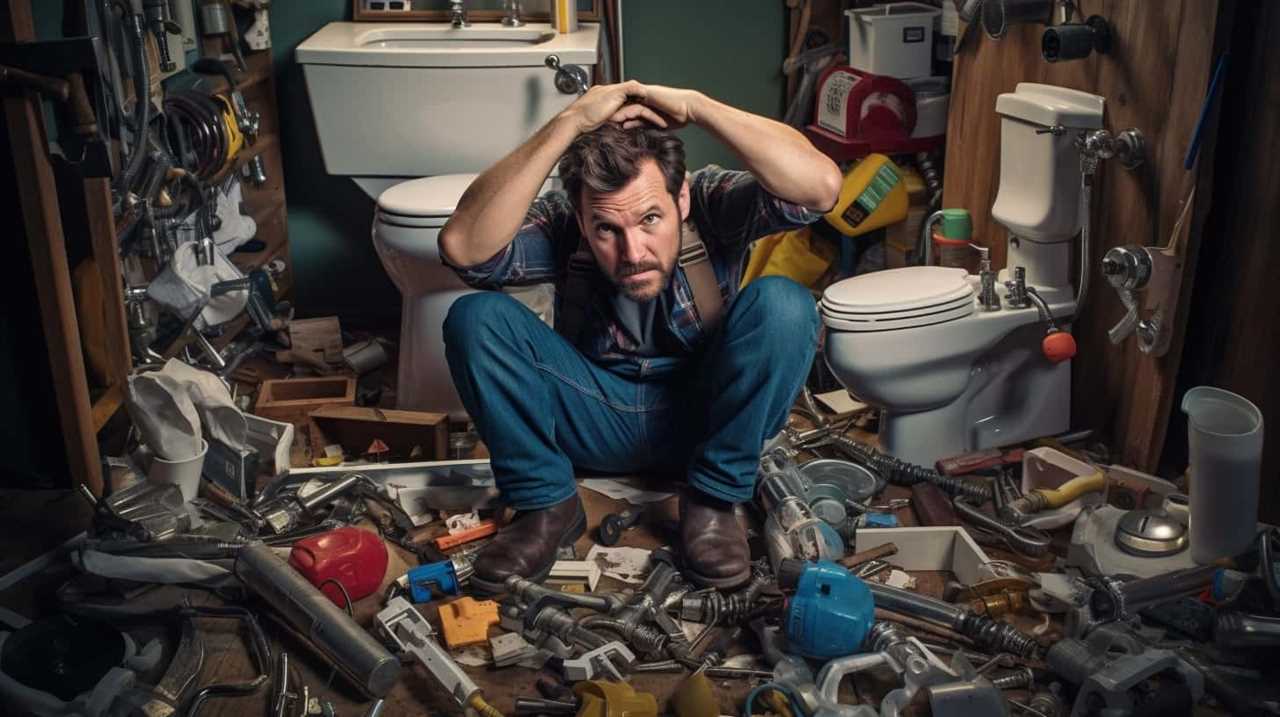
The fill valve is responsible for regulating the flow of water into the tank after a flush. If it isn’t functioning correctly, it can cause water to continuously leak into the bowl or prevent the tank from refilling properly.
This can lead to water wastage, higher water bills, and potential damage to the toilet and surrounding areas. To address this problem, it’s important to inspect the fill valve for any signs of damage or wear.
Replacing the faulty fill valve with a new one can help restore the proper functioning of the toilet and prevent further issues.
Clogged Supply Line
To continue troubleshooting the issue of a toilet not refilling properly, another potential cause could be a clogged supply line. A supply line blockage can occur when debris or mineral deposits accumulate and restrict the flow of water into the toilet tank. This can result in a slow or incomplete refill after flushing. To determine if the supply line is blocked, you can disconnect it from the toilet tank and inspect it for any obstructions. If you find a blockage, you can use a pipe snake or a wire hanger to clear it. It’s important to note that if the supply line is clear and the toilet is still not refilling properly, it may indicate a different issue, such as toilet bowl cracks or a faulty fill valve. In such cases, it’s best to consult a professional plumber for further assistance.

| Potential Cause | Solution |
|---|---|
| Clogged Supply Line | – Disconnect the supply line from the toilet tank. – Inspect for blockages. – Clear any obstructions using a pipe snake or wire hanger. – Reconnect the supply line and test the toilet for proper refilling. – If issue persists, consult a professional plumber. |
Water Pressure Issues
Now let’s address another potential cause for a toilet not refilling properly: water pressure issues.
Low water pressure can prevent the tank from refilling at the desired rate, leading to incomplete flushing and refilling cycles. One common issue that can affect water pressure is the presence of air in the supply line. When air enters the line, it can disrupt the flow of water and decrease the pressure, resulting in a slow or incomplete refill.
To fix this problem, you can try bleeding the air out of the supply line by turning off the water supply to the toilet, flushing it once to release any remaining water, and then turning the water supply back on. This should help restore proper water pressure and ensure a complete refill.
Now, let’s move on to discussing the next potential cause: a malfunctioning flapper.
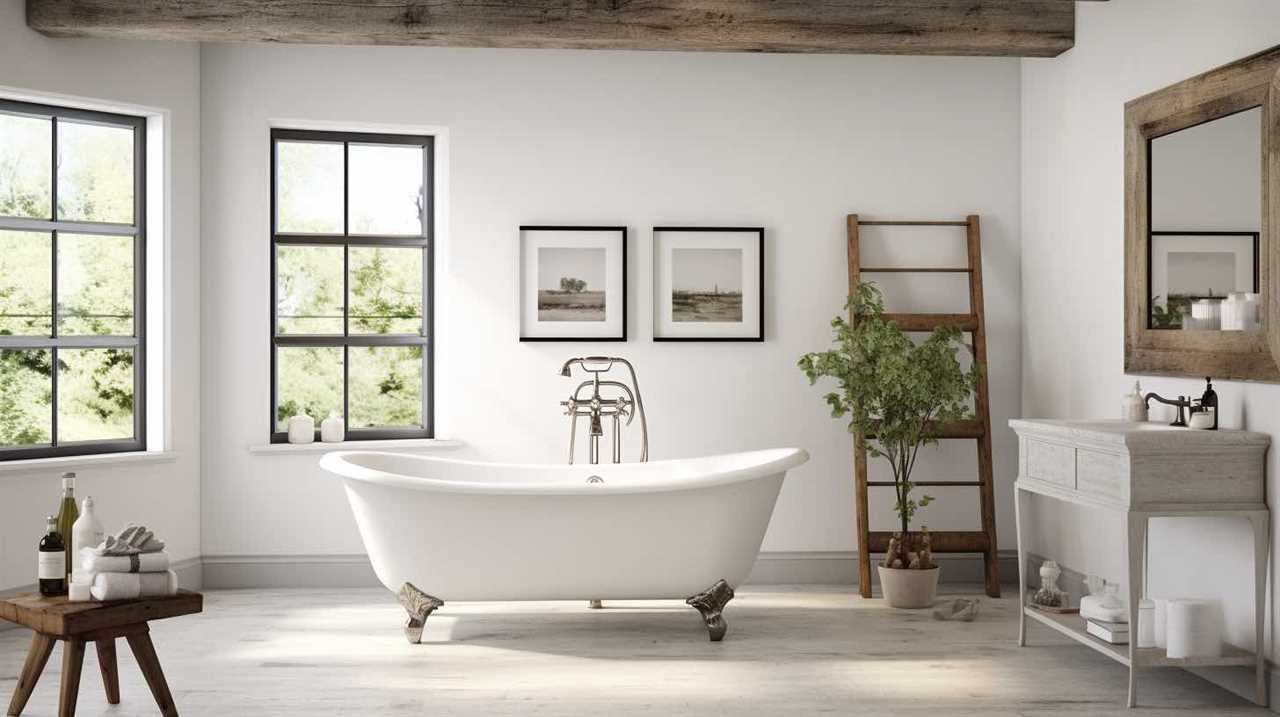
Malfunctioning Flapper
Moving on from water pressure issues, another possible cause for a toilet not refilling properly is a malfunctioning flapper.
The flapper is a rubber seal that opens and closes to allow water to flow from the tank into the bowl during a flush. If the flapper isn’t functioning correctly, it can prevent the tank from refilling after a flush.
Here are some troubleshooting tips for flapper issues:
- Inspect the flapper for any signs of damage or wear.
- Clean the flapper and the area around it to remove any debris or mineral deposits.
- Adjust the chain length to ensure proper flapper movement.
- Consider replacing the flapper if it’s old or damaged beyond repair.
- Test the flapper by flushing the toilet and observing its performance.
Broken Float Assembly
One possible cause for a toilet not refilling properly is a broken float assembly. The float assembly is responsible for regulating the water level in the toilet tank. When it is broken, it can prevent the tank from refilling properly after each flush. To better understand the importance of the float assembly and its role in toilet tank plumbing maintenance, let’s take a closer look at its components:

| Component | Description |
|---|---|
| Float | A buoyant object that rises and falls with the water level in the tank. |
| Float arm | Connects the float to the fill valve, allowing the float to control the flow of water. |
| Fill valve | Regulates the flow of water into the tank, based on the position of the float. |
| Overflow tube | Prevents the tank from overflowing by directing excess water into the bowl. |
Regularly inspecting and maintaining the float assembly can help ensure proper functioning of the toilet tank and prevent issues with refilling.
Frequently Asked Questions
How Does a Faulty Fill Valve Affect the Toilet’s Water Refill Process?
A faulty float valve can greatly impact the toilet’s water refill process. Sediment build up can cause the valve to malfunction, preventing it from properly closing and allowing water to flow in.
What Are Some Common Signs of a Clogged Supply Line in a Toilet?
Common signs of a clogged supply line in a toilet include slow or incomplete refilling, weak flush, and gurgling sounds. Troubleshooting steps involve checking for obstructions, clearing the line, and ensuring proper water flow.
How Can Water Pressure Issues Contribute to a Toilet Not Refilling Properly?
Water pressure issues can cause a toilet to not refill properly. To troubleshoot, check if the fill valve is clogged or damaged. Water pressure solutions include adjusting the water supply valve or installing a pressure regulator.

What Are the Potential Reasons for a Malfunctioning Flapper in a Toilet?
Potential solutions for a malfunctioning flapper in a toilet can be addressed through troubleshooting techniques. By inspecting the flapper for damage or debris, adjusting the chain length, or replacing the flapper altogether, the issue can be resolved efficiently.
How Does a Broken Float Assembly Impact the Toilet’s Ability to Refill?
A broken float assembly can significantly impact a toilet’s ability to refill. It can lead to water wastage and hinder proper flushing. Troubleshooting steps include checking for leaks, adjusting the float arm, or replacing the faulty assembly.
Conclusion
In conclusion, when your toilet isn’t refilling, it’s usually due to a faulty fill valve, clogged supply line, water pressure issues, malfunctioning flapper, or broken float assembly.
It’s important to address these issues promptly to avoid further inconvenience.
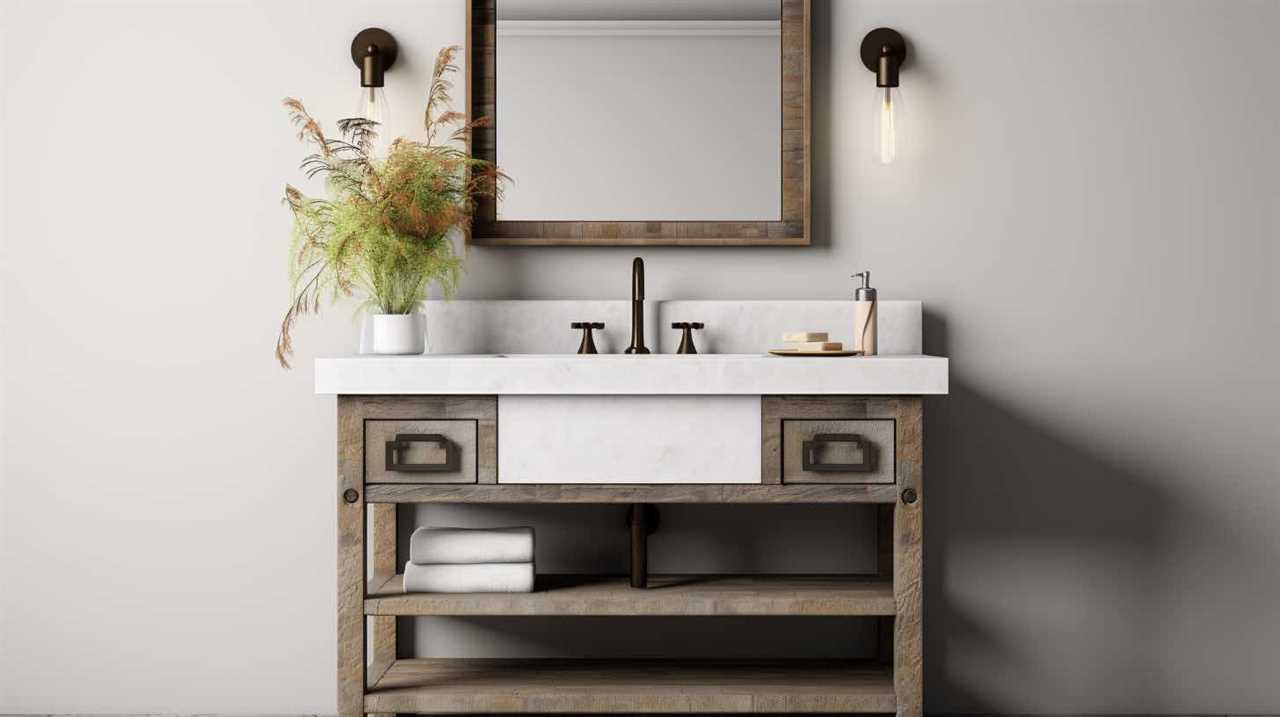
Did you know that a leaking toilet can waste up to 200 gallons of water per day? This staggering statistic highlights the urgency of fixing toilet refill problems to conserve water and protect our precious resources.
With an impeccable eye for detail and a passion for bathroom-related, Ava leads our editorial team gracefully and precisely.
Under her guidance, Best Modern Toilet has flourished as the go-to resource for modern bathroom enthusiasts. In her free time, you might find Ava exploring antique shops and looking for vintage bathroom fixtures to add to her collection.
-

 Reviews3 months ago
Reviews3 months agoBest Toilet Air Freshener: Top 10 Picks for a Fresh-Smelling Bathroom [2024]
-

 FAQ - Advanced Bathroom Queries2 months ago
FAQ - Advanced Bathroom Queries2 months agoWhich Countries Use Bidets the Most
-

 Reviews3 months ago
Reviews3 months agoBest Waterless Toilets: Top Options for Eco-Friendly Bathrooms [2024]
-

 Buying Guides3 months ago
Buying Guides3 months agoWhat to Do When You Accidentally Flushed Something Down the Toilet
-

 Reviews1 week ago
Reviews1 week agoLDian Smart Toilet Review [2024]
-

 Reviews3 months ago
Reviews3 months agoBest Toilet Enzyme Cleaners for Optimal Odor Control [2024]
-

 Reviews1 month ago
Reviews1 month agoKohler Innate Smart Toilet Review [2024]
-

 Reviews1 month ago
Reviews1 month agoKohler NUMI 2.0 Smart Toilet Review [2024]





















